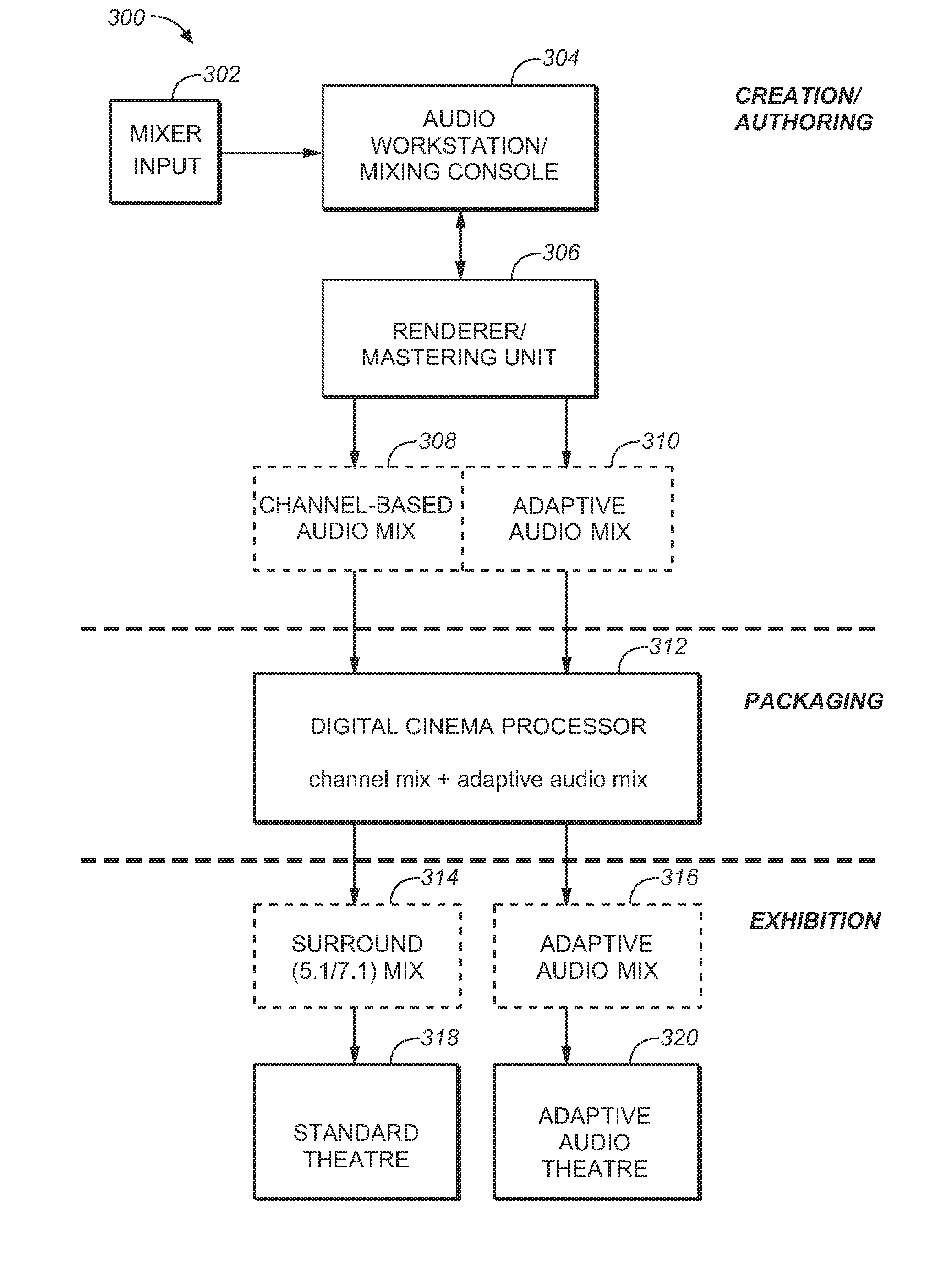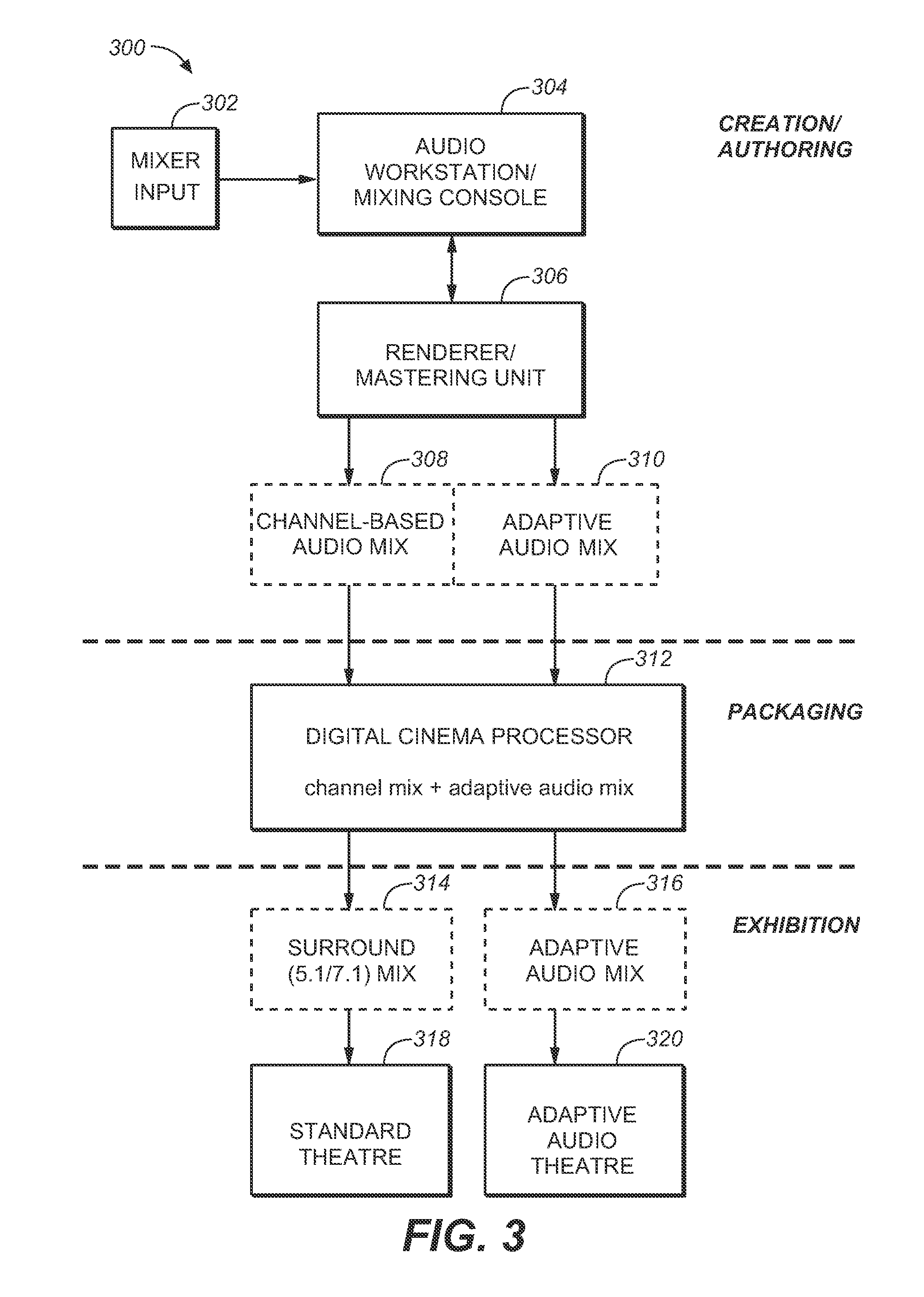System and method for adaptive audio signal generation, coding and rendering
- Summary
- Abstract
- Description
- Claims
- Application Information
AI Technical Summary
Benefits of technology
Problems solved by technology
Method used
Image
Examples
Embodiment Construction
[0011]Systems and methods are described for a cinema sound format and processing system that includes a new speaker layout (channel configuration) and an associated spatial description format. An adaptive audio system and format is defined that supports multiple rendering technologies. Audio streams are transmitted along with metadata that describes the “mixer's intent” including desired position of the audio stream. The position can be expressed as a named channel (from within the predefined channel configuration) or as three-dimensional position information. This channels plus objects format combines optimum channel-based and model-based audio scene description methods. Audio data for the adaptive audio system comprises a number of independent monophonic audio streams. Each stream has associated with it metadata that specifies whether the stream is a channel-based or object-based stream. Channel-based streams have rendering information encoded by means of channel name; and the obj...
PUM
 Login to View More
Login to View More Abstract
Description
Claims
Application Information
 Login to View More
Login to View More - R&D
- Intellectual Property
- Life Sciences
- Materials
- Tech Scout
- Unparalleled Data Quality
- Higher Quality Content
- 60% Fewer Hallucinations
Browse by: Latest US Patents, China's latest patents, Technical Efficacy Thesaurus, Application Domain, Technology Topic, Popular Technical Reports.
© 2025 PatSnap. All rights reserved.Legal|Privacy policy|Modern Slavery Act Transparency Statement|Sitemap|About US| Contact US: help@patsnap.com



